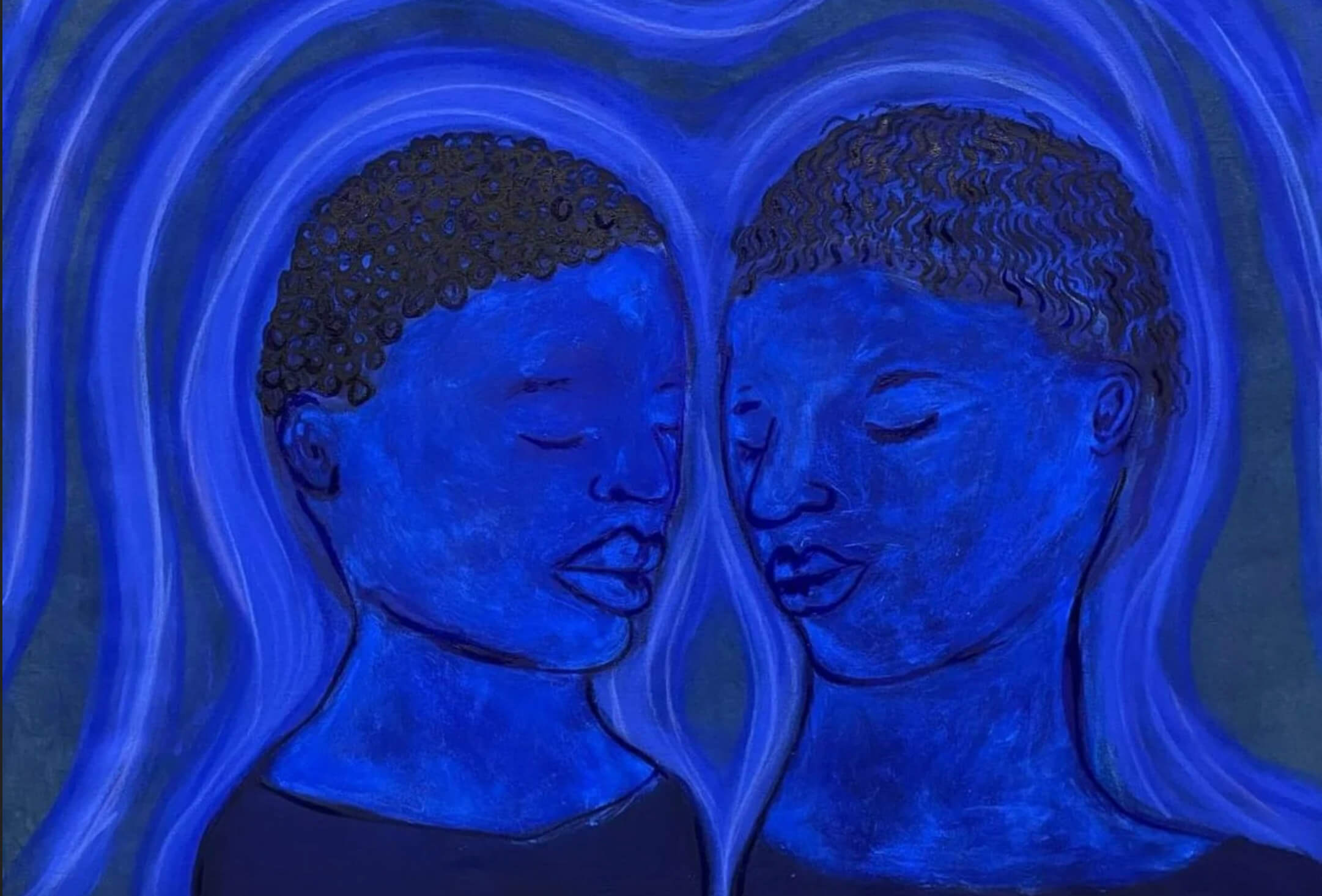Run With The Wolves
30 November 2021–1 March 2022
Lawrie Shabibi
Unit 21, Alserkal Avenue
Al-Quoz
Dubai
UAE
Run With The Wolves is an exhibition featuring five contemporary women artists whose works explore mythology, identity, gender and sexuality through figuration as their central motif. The exhibition takes its title from the book Women who Run with the Wolves – Myths and Stories of the Wild Woman Archetype by Clarissa Pinkola Estés. A Jungian analyst and storyteller, Estés uses multicultural myths and fairy tales as ‘psychic archaeological digs’ to access what she refers to as the ruins of the female unconscious. The exhibition reflects on how five women artists access their own memory and experiences – conscious and subconscious—to express the contemporary experience.
Natalia Gonzalez Martin and Shailee Mehta, two of the three painters in the exhibition, reference cultural histories, myths and religion in their paintings. Gonzalez Martin works on a small scale, using traditional painting techniques that draw their influence from Christian religious iconography and medieval illuminated manuscripts informed by her Spanish customs and heritage. Predominantly working with the female figure, she uses minutely detailed brushstrokes to paint intimate corners of the female body—the curves of the neck, the ear, the toes – creating an erotic tension between desire and the forbidden.

Shailee Mehta’s artistic practice stems from an ongoing dialogue between a personal space of imagination and nostalgia, and the weaving of history, memory and contemporary society. Working extensively with elements of figuration and embodiment, she situates the female body as a central agential subject in her explorations around femininity and visibility. Her work is descriptive of a poetics of space where elements of the interior and the exterior blend into each other: hence her protagonists are placed in domestic settings and yet their features, colours and forms merge with their natural environment, giving them an unsettling ‘untamed’ appearance. Rooted in the female gaze, her female figures subvert patriarchal tropes, and the narratives of looking and being looked at take up multiple meanings such as desire, contemplation or rejection.
Sola Olulode’s paintings are nuanced and tender visions of intimacy and community; her wistful images celebrations of Black identity, womanhood and non-binary people. Distinguished by their use of gestural brushwork, indigo dye, wax, oil bar, impasto and monochromatic schemes (typically in blue, green or yellow) they speak strongly of her Nigerian heritage.
Allowing the body to take centre stage, she creates utopian scenes which give prominence to movement, gesture, and romanticised acts. In Laying In the Grass IV (2021) she paints two figures embracing in the grass, and in Waves Of Emotion Under The Moonlight (2021) a portrait of a couple revel dreamily under the moonlight. Reflecting her own community and experiences, her works expose a unique tenderness and a fluid ability of bringing to life representation and visibility of Black Queer lived experiences.
Wawi Navarozza works in photography and employs her own figure to create formal staged compositions in tableau vivant large format to investigate displacement and disorientation, reflecting on the exploration of a deeper sense of place and identity that is rooted in her own experiences as a Filipino and its specific blend of East/West, Catholic/Pagan and Latin/Asian.
In the series Tropical Gothic presented in the exhibition, Navarroza reconstructs and rediscovers herself amongst layers of disparate objects rendered in eccentric and vibrant colours—cascading local fruits, overgrown fauna, vinyl tablecloths, and patterned textiles that physically wrap around the frames. Following in the tradition of other female artists who use history, appropriation, and citation as a form of cultural critique—Frida Kahlo, Mickalene Thomas and Cindy Sherman—these self-portraits reference a shared condition among women across time and space, history and geography.
Saelia Aparicio on the other hand dwells on ideas of the organic, establishing analogies between corporeal and social mechanisms. In her practice that spans mural, drawings, sculpture and textile, she finds inspiration from classical mythology and the transformative hybrid forms found in Ancient Egypt, Mesopotamia and pre-Columbian Meso-American hybrids between animals and humans such as the sphinx, Anubis or the Mayan Camazotz. In her works she creates her own imagined figures that seem to mix human forms with animals, plants, or machines.
These forms are completely imagined and are very specific in their gender fluidity, drawing from the two-spirited idea that comes from Indigenous North American culture. In the exhibition, she presents her wall tapestries, a collaboration with fashion designer Craig Green, which feature a series of folk-inspired portraits that deliver an expressive take on the human form. From conceptual nature-inspired motifs like parts of walnut trees and poison ivy, the hand-stitched artworks showcase an imaginative mashup of ancient anatomical diagrams and contemporary art.
©2021 Lawrie Shabibi





